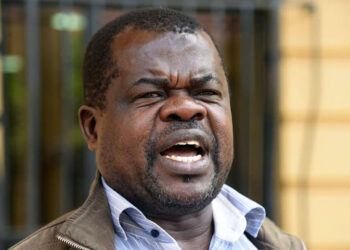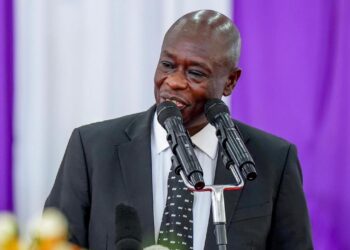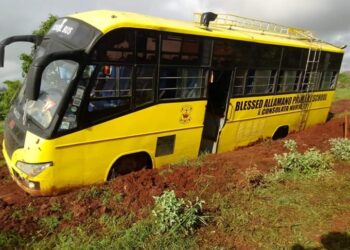A Hawaii tsunami warning 2025 has been issued following a massive 8.8-magnitude earthquake off Russia’s Kamchatka Peninsula on July 29, prompting widespread evacuations across the state’s coastal areas. The Pacific Tsunami Warning Center (PTWC) reported that the quake, centered 119 km southeast of Petropavlovsk-Kamchatsky, generated a tsunami with potential waves of 1-3 meters above tide level in Hawaii, with higher waves up to 4 meters possible in Russia and Ecuador.
Sirens blared in Honolulu starting at 3:23 p.m. HST, urging residents to seek higher ground or move to the fourth floor of buildings, as the first waves are expected around 7:17 p.m. HST. Governor Josh Green emphasized, “Take this seriously—evacuate now to avoid life-threatening risks.”
Hawaii Tsunami Warning 2025
National Weather Service (NWS) issued the Hawaii tsunami warning 2025 at 2:43 p.m. HST, upgrading from an initial watch after the quake struck at 1:25 p.m. HST. The PTWC warned that destructive waves could impact all Hawaiian islands, wrapping around coastlines regardless of direction.
“Tsunami waves efficiently wrap around islands, and the first wave may not be the largest,” the Honolulu Department of Emergency Management stated on X, urging residents to check evacuation maps at hnlalert.gov. Maui’s Emergency Management Agency activated sirens at 3:22 p.m., closing coastal parks like Kepaniwai and halting bus services by 6:30 p.m. Traffic gridlock was reported in Oahu, with residents like Adam Jung loading supplies to flee Waikiki.
Russia 8.8 Magnitude Earthquake
The 8.8-magnitude earthquake, one of the strongest since Japan’s 9.0 quake in 2011, struck Russia’s Far East at a shallow depth of 19.3 km, amplifying its tsunami-generating potential.
Located in the Pacific Ring of Fire, Kamchatka saw minor injuries but no fatalities, with a kindergarten and a fish processing plant in Severo-Kurilsk partially flooded by 3-4 meter waves.
Russia’s Ministry of Emergencies evacuated 2,000 residents from Severo-Kurilsk, with Governor Vladimir Solodov calling it the region’s strongest quake in decades.
Aftershocks of 6.3 and 6.9 magnitudes followed, heightening concerns. The U.S. Geological Survey (USGS) initially reported the quake as 8.0, later upgrading it to 8.8.
Tsunami Alerts Across the Pacific
Beyond Hawaii, tsunami alerts span the Pacific, with Japan’s Hokkaido reporting 30-40 cm waves, lower than the feared 3 meters, and evacuations ordered for 900,000 people from Hokkaido to Okinawa. The U.S. West Coast, including Northern California’s Crescent City, faces a tsunami advisory with potential waves of 2.6-4.8 feet, while Alaska’s Aleutian Islands remain under a warning.
Ecuador and Chile anticipate waves up to 3 meters, prompting beach evacuations in the Galápagos and Mexico’s Pacific coast. The Philippines, Indonesia, Guam, and the Northern Mariana Islands are also on alert for hazardous currents. President Donald Trump urged vigilance on X, directing people to tsunami.gov for updates.
Is Hawaii Tsunami Threat Real After Russia Quake?
Addressing “is Hawaii tsunami threat real?”, experts warn that the quake’s shallow depth and Pacific location make destructive waves plausible. The PTWC noted that waves could cause significant coastal flooding, with debris amplifying damage.
Hawaii’s 2018 false missile alert has heightened public sensitivity to sirens, but Governor Green stressed, “This is not a drill—assume life-threatening waves.” Laura Buchtel, a Maui tourist, described panic as sirens sounded at 1:30 a.m., with resort staff urging evacuation.
While initial waves in Japan and Russia were smaller than feared, experts caution that later waves could be larger, and the threat persists for hours.
Hawaii’s Preparedness and Past Tsunami Lessons
Hawaii’s history with tsunamis, like the 1952 Kamchatka quake causing 30-foot waves, informs its robust response. The state’s emergency proclamation activated the National Guard, with ports closed and coastal hotels evacuating guests.
Hawaii News Now reported schools canceling sports despite summer break, and Oahu’s H-1 highway saw heavy traffic as residents moved inland. A citizen posted, “Hawaii tsunami warning 2025 is no joke—traffic’s a mess, but safety first!”
The PTWC’s interactive maps guide residents to safe zones, emphasizing elevations above 15 meters. Unlike the 2011 Japan tsunami, no nuclear plant issues have been reported in Japan’s Fukushima region.
What’s Next for Hawaii and the Pacific?
The PTWC will issue hourly updates until the Hawaii tsunami threat subsides, with Midway Island’s wave impact providing clues on severity. While Russia and Japan report minimal damage so far, Hawaii braces for potential flooding.
CNN noted that tsunami energy, directed by the fault’s rupture, explains why distant Hawaii and Ecuador face higher risks than closer Japan. With Hurricane Iona monitored south of Hawaii, officials urge calm but decisive action.















